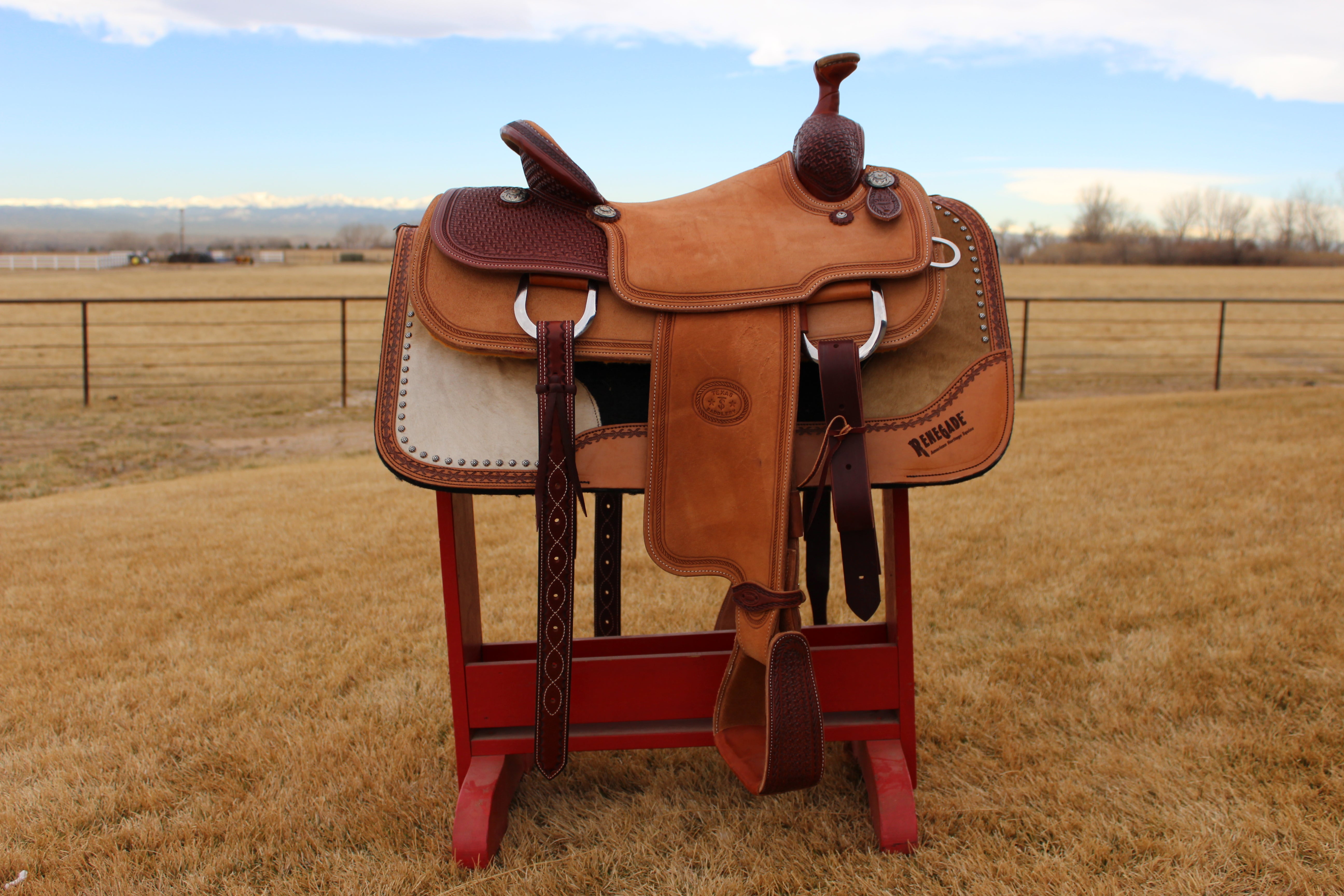How much do you know about Western horse saddles? Are you just getting into horseback riding and wanting to learn more about the parts of the saddle? Or, maybe you have some knowledge already but would like to learn more about the construction process behind a saddle. If so, keep reading! There are many different parts and pieces to a saddle so it can be difficult to know where to begin. We’ll start off with naming the basic parts of a saddle and then move into an overview of the construction process.
Identifying the Parts of the Saddle
Let’s start by identifying the primary parts that make up a Western horse saddle. First, you’ll need to be familiar with the concept of a tree. Nope, this is not referring to the trees in your yard. The concept of a saddle tree was first envisioned by a nomadic tribe, known as the Samaritans, 20 centuries ago.
A saddle tree is the wooden structural foundation of the saddle design. In its simplicity, this design is composed of two arches connected by wooden rods that rest along the sides of the horse near the spine. This basic structure became the foundation for what later evolved into today’s Western saddle. The tree is essentially the bones of the saddle, which indicates the shape that the saddle will take. In an ideal world, every tree would be custom-made to fit the horse it’s intended to be used for to ensure an ideal saddle fit. However, trees generally come in a few standard sizes that will work for most horses.

There are a few other main parts you should be familiar with:
Skirt–The skirt is usually made of sheepskin and leather and provides cushioning on the saddle and serves a couple of purposes. A saddle skirt offers a barrier between the horse and the hardness of the bars and provides a more even weight distribution of the rider. Additionally, the skirt offers added comfort for the rider.
Seat–As the name implies, the leather seat is the central area on the top of the saddle where the rider will sit.
Cantle–The cantle provides back support for the rider as it is a raised piece located at the back of the seat.
Fenders–The fenders are located along the sides of the saddle to serve as protection between the rider and horse.
Stirrups–The stirrups can be found along both sides of the saddle. The rider uses these to rest their feet in when riding, mounting, and dismounting. The stirrups connect to the fenders.
Cinch & Latigoes–These are leather straps that aid in securing the saddle to the horse to make sure it stays in the correct position.
Horn–A more historically-based feature, the saddle horn is located on the top, front portion of the saddle. It is used for tying a rope around after a rider has lassoed an animal such as a cow.
Now that we’ve covered some of the major components of a Western saddle, let’s review the basic construction process.
Constructing the Saddle
Let’s start with the foundation of the saddle, the tree. Generally made of wood, the tree, or skeletal structure of the saddle, is responsible for the end shape of the saddle. It is important to begin with a quality tree in the construction process, this is especially vital if the saddle will be used for activities like steer roping. At Texas Saddlery we use our own custom wooden trees that are reinforced with fiberglass for durability. They utilize saddle maker Dale Martin’s original tree design with small variations to suit the needs of the horse and rider.
The next step is to cover the tree. During this stage, it’s important to start with the right material: leather. There are several different hide options that can be used; however, cattle hide is the most common in saddle construction. Leather is the perfect material as different parts of the saddle require sturdy and stiff properties while others need breathable and pliable characteristics. Through the use of specialized leather and other materials, these needs can be met. At Texas Saddlery, we use high-quality leather to ensure a durable, long-lasting product.
Now let’s dive a little deeper and break down the different types of specialized leather used in each part of the saddle. The main types of leather used include skirting, latigo, and harness. Skirting leather works well for the hanging portions of the saddle, such as the skirts or any areas that might come between the horse and rider’s legs. Next, latigo is useful for crafting leather straps, such as ties and cinches. Last but not least, harness leather works well in multiple saddle parts due to its weight and thickness.

In addition to constructing the wooden tree and various leather parts, sheepskin is added to the saddle to cover both the inside of the skirts and the tree underneath the saddle. Additionally, towards the end of construction, decorations can be added to the exterior, such as ornaments or lacing. Especially in Western saddles, there are often exquisite leather carvings added to the leather. At Texas Saddlery, we take pride in beautifully hand-tooling each and every one of our custom-made saddles.
Now, this overview has barely scratched the surface of naming all of the parts and pieces that comprise a saddle. Additionally, there is much more to be learned about the saddle-making process than what was covered here. However, this information offers a great springboard in furthering your understanding of your saddle’s composition and the steps involved should you ever consider constructing one yourself. However, if you’re not feeling quite that ambitious, not to worry, Texas Saddlery has got you covered!
